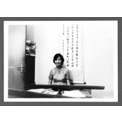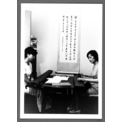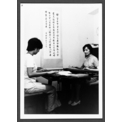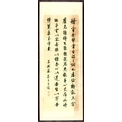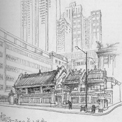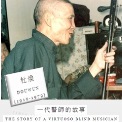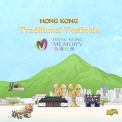-
History & Society
- Education in Pre-war Hong Kong
- History of Taikoo Sugar Refinery
- Hong Kong Products Exhibition
- Local Festivals Around the Year
- Post-war Industries
- Pre-war Industry
- The Hong Kong Jockey Club Archives
- Tin Hau Festival
- Memories We Share: Hong Kong in the 1960s and 1970s
- History in Miniature: The 150th Anniversary of Stamp Issuance in Hong Kong
- A Partnership with the People: KAAA and Post-war Agricultural Hong Kong
- The Oral Legacies (I) - Intangible Cultural Heritage of Hong Kong
- Hong Kong Currency
- Hong Kong, Benevolent City: Tung Wah and the Growth of Chinese Communities
- The Oral Legacies Series II: the Representative List of the Intangible Cultural Heritage of Hong Kong
- Braving the Storm: Hong Kong under Japanese Occupation
- A Century of Fashion: Hong Kong Cheongsam Story
Geography & EnvironmentArt & Culture- Calendar Posters of Kwan Wai-nung
- Festival of Hong Kong
- Ho Sau: Poetic Photography of Daily Life
- Hong Kong Cemetery
- Sketches by Kong Kai-ming
- The Culture of Bamboo Scaffolding
- The Legend of Silk and Wood: A Hong Kong Qin Story
- Journeys of Leung Ping Kwan
- From Soya Bean Milk To Pu'er Tea
- Applauding Hong Kong Pop Legend: Roman Tam
- 他 FASHION 傳奇 EDDIE LAU 她 IMAGE 百變 劉培基
- A Eulogy of Hong Kong Landscape in Painting: The Art of Huang Bore
- Imprint of the Heart: Artistic Journey of Huang Xinbo
- Porcelain and Painting
- A Voice for the Ages, a Master of his Art – A Tribute to Lam Kar Sing
- Memories of Renowned Lyricist: Richard Lam Chun Keung's Manuscripts
- Seal Carving in Lingnan
- Literary Giant - Jin Yong and Louis Cha
Communication & Media- Hong Kong Historical Postcards
- Shaw Brothers’ Movies
- Transcending Space and Time – Early Cinematic Experience of Hong Kong
- Remembrance of the Avant-Garde: Archival Camera Collection
- Down Memory Lane: Movie Theatres of the Olden Days
- 90 Years of Public Service Broadcasting in Hong Kong
- Multifarious Arrays of Weaponry in Hong Kong Cinema
-
History & SocietyGeography & EnvironmentArt & Culture
-
View Oral History RecordsFeatured StoriesAbout Hong Kong Voices
-
Hong Kong MemoryThe Legend of Silk and Wood: A Hong Kong Qin StoryRecently Visited
Teacher-student Tutelage
Tsar Teh-yun (1905-2007) was born in Wuxing (present day Huzhou City), Zhejiang, and then relocated to Shanghai. Tsar Teh-yun was good at poetry and literature since a young age. She graduated from Nanyang Normal School for Girls and then Shanghai Girl’s Professional College, and later engaged herself into education work. In 1937, when the Sino-Japanese war of resistance broke out, Tsar Teh-yun and her husband, Shen Honglai and son, George Shen moved to Hong Kong. Tsar began taking qin lessons from Shen Caonong in 1938. After four years, she returned to Shanghai. On top of studying the qin, she also took part in the events of Shanghai’s “Jinyu Qin Society” and acquainted with other qin musicians.
Tsar Teh-yun began teaching individual students after she settled in Hong Kong for good in the 1950s. She was also quite active in the yaji (elegant gatherings) as well as stage performance that were held during this time. In 1964, she accepted the appointment as qin instructor for the New Asia Chinese Music Society of the New Asia College. Ever since she focused on teaching and has taught students in the use of qin manuscripts via face-to-face tutelage. Tsar officially taught more than 40 students, including the second generation qin musicians such as Lau Chor-wah, Sou Si-tai, and Tse Chun-yan. The second generation students began performing publicly in the 1980s. They delved deeply into the instrument and even wrote their own music in addition to teaching. As of today, the qin legacy has been transmitted from Tsar Teh-yun to the third and fourth generations of qin students. In 1998, qin players of her school founded the Deyin Qin Society to promote Tsar’s virtues, knowledge and art of qin.
Tsar Teh-yun wrote the Yinyinshi Qinpu (Yinyinshi Manuscript), which includes some of the representational pieces of her qin chamber “Yinyinshi”, including the Changmen Yuan (Sorrow in Changmen Palace), Pingsha Luoyan (Wild Geese Landing on Sand), Yuqiao Wenda (Dialogue between a Fisherman and Woodcutter), Shuixian Cao (Water Immortal), Longxiang Cao (Soaring Dragon), Xiaoxiang Shuiyun (Waters and Mists of the Rivers Xiao and Xiang), Yangchun (Sunny Spring) and the Hujia Shibapai (Eighteen Variations on the Tune “Barbarian Horn”). The qin style of “Yinyinshi” is characterised by a proper and solemn posture, agile and energetic playing, proper fingering techniques, and a vivacious rhythm that is infinite in variety. In its musical treatment, the pieces of “Yinyinshi” adapt sophisticatedly according to the changes in mood, using smooth phrasing with vigour in gentility. Tsar’s contained and implicit style is captivatingly different from the period signature of qin as established in the mainland China since the 1950s. In terms of musical character, the “Yinyinshi” style has a closer resemblance to the qin style in the first half of the last century. Her school plays a pivotal role in the transmission and development of the art of qin in Hong Kong.
Photos
Copyright © 2012 Hong Kong Memory. All rights reserved.






